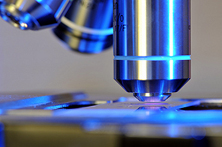High Speed 3D Imaging of Cells In-Vivo By Nobel Laureate


Lattice light-sheet microscopy
The winners of the Nobel Prize in Chemistry are reporting on another Nobel winning development in the area of cell imaging. The development enables high speed three dimensional in-vivo imaging of cells without damaging the structure of the cell or its components.
Nobel Prize winning scientist Eric Betzig and a team of researchers from Janelia Research Campus at Howard Hughes Medical Institute have developed a three dimensional imaging technique that provides highly detailed scams in detail. Improving on his prize winning work on PALM, the new technique is fast and safe as far as cell structure is concerned. Called as Lattice light sheet microscopy, it even allows researchers to take videos of individual cells in motion. In this technique, the ultrathin structured light moves through the sample, it energizes everything in the plane to fluoresce. This radiation is captured through a camera and the slices produced by the light sheet are reconstructed to create a 3D image. The thin sheets provide high axial resolution. Also unlike widefield and confocal microscopy which alter the physiological state of the sample, this technique can be carried out for considerable time periods, providing fantastic videos, without causing damage to the cells. The noninvasiveness, speed and high spatial resolution of this technique make it a promising tool for in vivo 3D imaging of fast dynamic processes in cells and embryos.
Movie S12 High Resolution from HHMI NEWS on Vimeo.
Source: Lattice light-sheet microscopy: Imaging molecules to embryos at high spatiotemporal resolution
